You know what’s wild? People spent $14.02 billion globally on memoirs and biographies in 2022, with a 5.7% increase from the previous year, according to Meminto’s comprehensive industry analysis. I remember picking up my first memoir during a particularly rough patch in my life – it wasn’t just the story that grabbed me, but that moment when you realize someone else walked through the exact same hell and came out the other side stronger.
That’s the real power of life stories: they don’t just entertain you, they completely shift how you think about what’s possible when life knocks you flat. These aren’t fairy tales about people who had it easy. They’re raw, honest accounts of ordinary folks who faced extraordinary crap and figured out how to not just survive, but actually thrive. More importantly, they show you exactly how they did it.
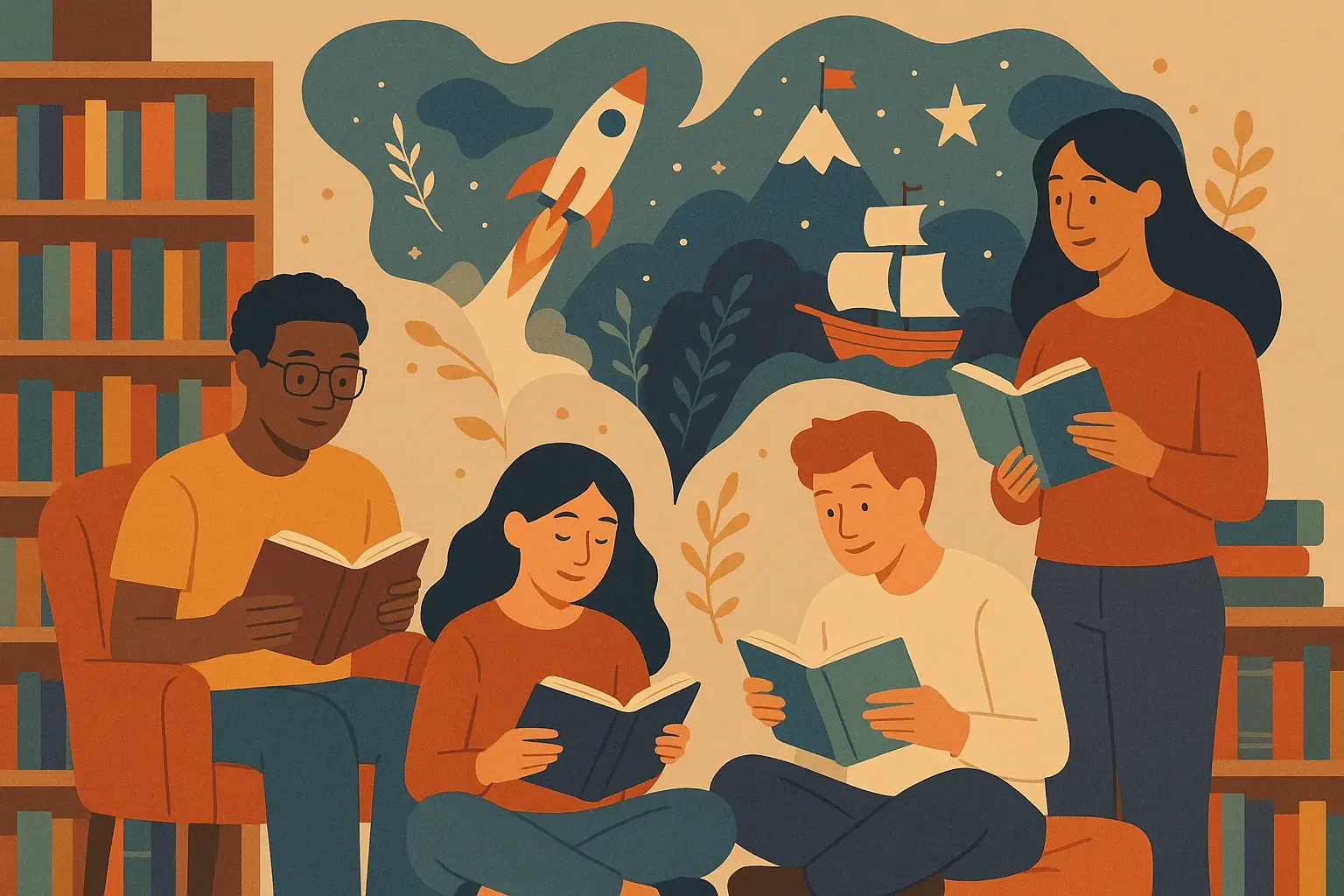
Table of Contents
-
Understanding What Makes Life Stories Actually Hit Different
-
How to Pick Stories That Won’t Waste Your Time
-
1. The Digital Detox Pioneer
-
2. The Climate Change Refugee
-
3. The Mental Health Warrior
-
4. The Financial Recovery Story
-
5. The Health Transformation Journey
-
6. The Corporate Dropout Entrepreneur
-
7. The Late-Career Pivot
-
8. The Gig Economy Success
-
9. The Social Impact Career
-
10. The Blended Family Builder
-
11. The Long-Distance Love Story
-
12. The Caregiving Journey
-
13. The Adoption Adventure
-
14. The Mindfulness Transformation
-
15. The Spiritual Awakening
-
16. The Self-Discovery Journey
-
17. The Forgiveness Story
-
18. The Artistic Renaissance
-
19. The Tech Innovation Story
-
20. The Social Innovation Pioneer
-
21. The Creative Collaboration
-
22. The Community Organizer
-
23. The Environmental Activist
-
24. The Educational Reformer
-
25. The Social Justice Advocate
-
Why These Stories Hit Different Right Now
-
How Nairrate Can Help You Tell Your Own Story
-
Final Thoughts
TL;DR
-
The life stories that actually stick with you are brutally honest, show real change over time, and tackle stuff you’re dealing with right now
-
The most powerful ones don’t sugarcoat the struggle – they show you both the breakdown and the breakthrough in all their messy glory
-
Stories covering everything from beating addiction to career changes to family drama give you the widest range of “holy crap, that could be me” moments
-
The best life stories give you actual tactics you can steal and use in your own life, not just warm fuzzy feelings
-
People today want stories about the stuff that’s actually stressing them out – digital overwhelm, climate anxiety, money problems, mental health struggles
-
The stories that really work show vulnerability without the victim mentality – they’re honest about the suck but focus on what you can actually do about it
Understanding What Makes Life Stories Actually Hit Different
Look, life stories grab you because they prove that regular people can handle absolutely insane circumstances and come out stronger. When someone gets real about their addiction recovery, career meltdown, or family falling apart, you’re not just reading about their experience – you’re seeing a preview of what might be possible in your own life. The brain science behind effective storytelling explains why these personal stories create such intense emotional connections and actually stick with you long after you’ve closed the book.
The best life stories take one person’s specific nightmare and somehow make it feel like a roadmap you could actually follow. They mix genuine vulnerability with clear transformation, tackling the stuff that’s keeping us up at night while giving us hope that things can actually get better. The stories that really work show authentic change over time – not overnight miracles, but the slow, messy process of becoming someone different.
|
Story Element |
The Weak Sauce Version |
The Version That Actually Works |
Why It Matters |
|---|---|---|---|
|
Opening |
“I was unhappy at work” |
“The panic attack hit during my presentation to the board, and I literally had to excuse myself to throw up in the bathroom” |
You feel it in your gut immediately |
|
The Problem |
“Things were hard” |
“I lost my house, my marriage, and my self-respect in six months – in that order” |
Shows specific, relatable stakes |
|
The Change |
“I got better” |
“Daily meditation at 5 AM, therapy twice a week even when I couldn’t afford it, and completely switching careers at 45” |
Gives you an actual game plan |
|
The Outcome |
“Life is good now” |
“I now help 200+ people annually through my wellness coaching practice, and my kids actually want to hang out with me again” |
Shows lasting impact that matters |
The stories that stick with you years later have something in common – they’re painfully honest about the struggle without wallowing in it. They show real growth, not some magical transformation that happened over a weekend. Most importantly, they give you specific strategies and mindsets you can actually adapt to your own messy situation.
What separates the life stories you’ll actually remember from the ones you’ll forget before you finish reading them? Authenticity is everything. You can smell it from a mile away when someone’s glossing over the hard parts or trying to sell you some sanitized version of their transformation. The stories that hit hardest acknowledge that change is complicated – the setbacks, the moments when you want to quit, the tiny victories that eventually add up to something bigger.
How to Pick Stories That Won’t Waste Your Time
Choosing life stories that are actually worth your time means looking for brutally honest narratives with clear before-and-after moments, universal themes that speak to your current struggles, cultural relevance, emotional impact that doesn’t feel manipulative, and practical takeaways you can actually use.
Real Talk and Relatability
The foundation of any compelling life story is that it feels genuine. Stories that sound too polished or perfect lose their power to connect with you. You want narratives that show the real struggle, complete with all the awkward, embarrassing, painful middle parts that most people go through during major life changes.
Here’s the thing about relatability – the circumstances don’t have to match yours exactly. A tech executive’s journey to disconnect from their devices might speak to anyone who’s tired of feeling like their phone owns them, even if they work in a completely different field.
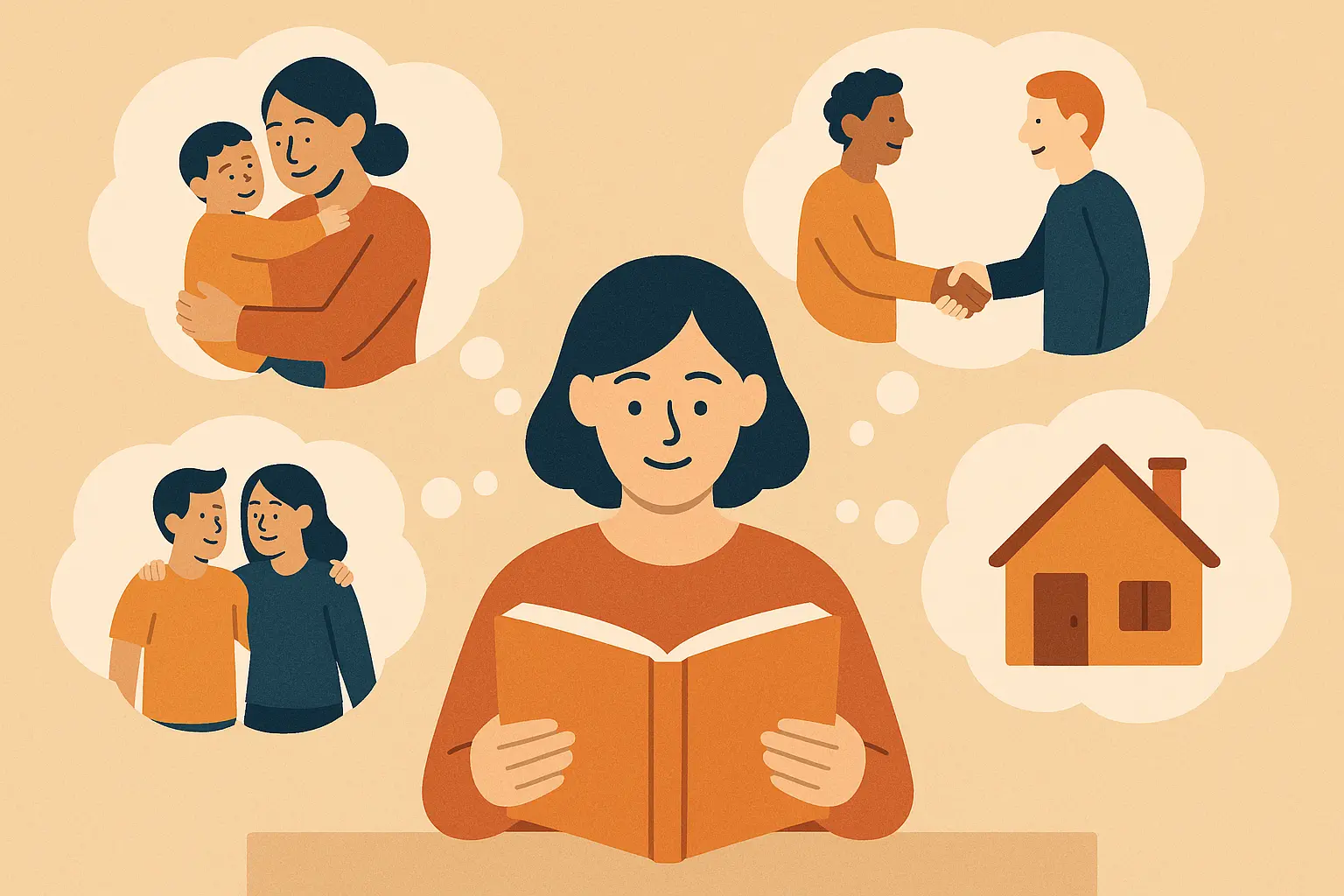
Stories That Actually Go Somewhere
Strong life stories follow compelling arcs with clear beginnings, middle parts that suck, and endings that feel earned. They show meaningful change over time rather than some magical overnight transformation. The best ones demonstrate character development through specific events and decisions, making you actually care about what happens next. Understanding powerful anecdote examples can help you spot the structural elements that make personal narratives truly compelling and memorable.
Universal Themes and Stuff You Can Actually Use
The most valuable life stories take one person’s specific situation and extract insights that work for broader audiences. They explore themes like bouncing back from failure, figuring out who you really are, or building better relationships while giving you specific strategies, mindsets, or approaches you can steal and adapt to your own life.
Think about a story where someone overcomes social anxiety. The good version doesn’t just say “they got better.” It includes specific techniques like gradual exposure therapy, breathing exercises that actually work, and ways to reframe the negative thoughts in your head. These practical elements let you implement real strategies instead of just feeling inspired for five minutes.
1. The Digital Detox Pioneer
Picture this: You’re a hotshot tech executive, but you’re staring at screens for 16 hours a day. Your relationships are falling apart, you haven’t slept properly in months, and anxiety is eating you alive. The breaking point? Your kid’s telling you about their day at school, and you’re literally scrolling through emails instead of listening. That gut-punch moment of realizing you’ve become that parent? That’s where this story starts.
This is about a tech executive who was drowning in digital addiction and anxiety that destroyed their personal relationships and health. After hitting rock bottom in the most public way possible, they completely transformed their relationship with technology and eventually started a movement to help others do the same.
The change didn’t happen overnight, and it sure wasn’t pretty. It started with baby steps – phone-free meals (which felt like torture at first), designated tech-free hours that they actually had to enforce with physical timers, and gradually cutting back on social media without going completely cold turkey. They figured out practical strategies for managing digital overwhelm, including specific apps for tracking usage and techniques for creating real boundaries between work and personal technology use.
What makes this story hit different is how personal change turned into something bigger. The executive eventually founded a digital wellness movement, helping thousands of others reclaim their sanity from technology. Their approach combines practical tools with deeper insights about why we get addicted to digital stimulation in the first place.
2. The Climate Change Refugee
Maria Santos watched her family’s fishing business disappear as increasingly violent typhoons kept battering her Philippine coastal town. When the third major storm in two years destroyed their home and boat, she faced the kind of choice nobody should have to make – stay and risk everything, or leave everything behind and start over in a completely foreign country.
Arriving with barely functional English and zero connections, Maria got a harsh reality check about what displacement actually looks like. She worked multiple soul-crushing, low-paying jobs while trying to navigate immigration processes that seemed designed to break you down. The discrimination was real, the loneliness was crushing, and some days she wondered if she’d made a huge mistake.
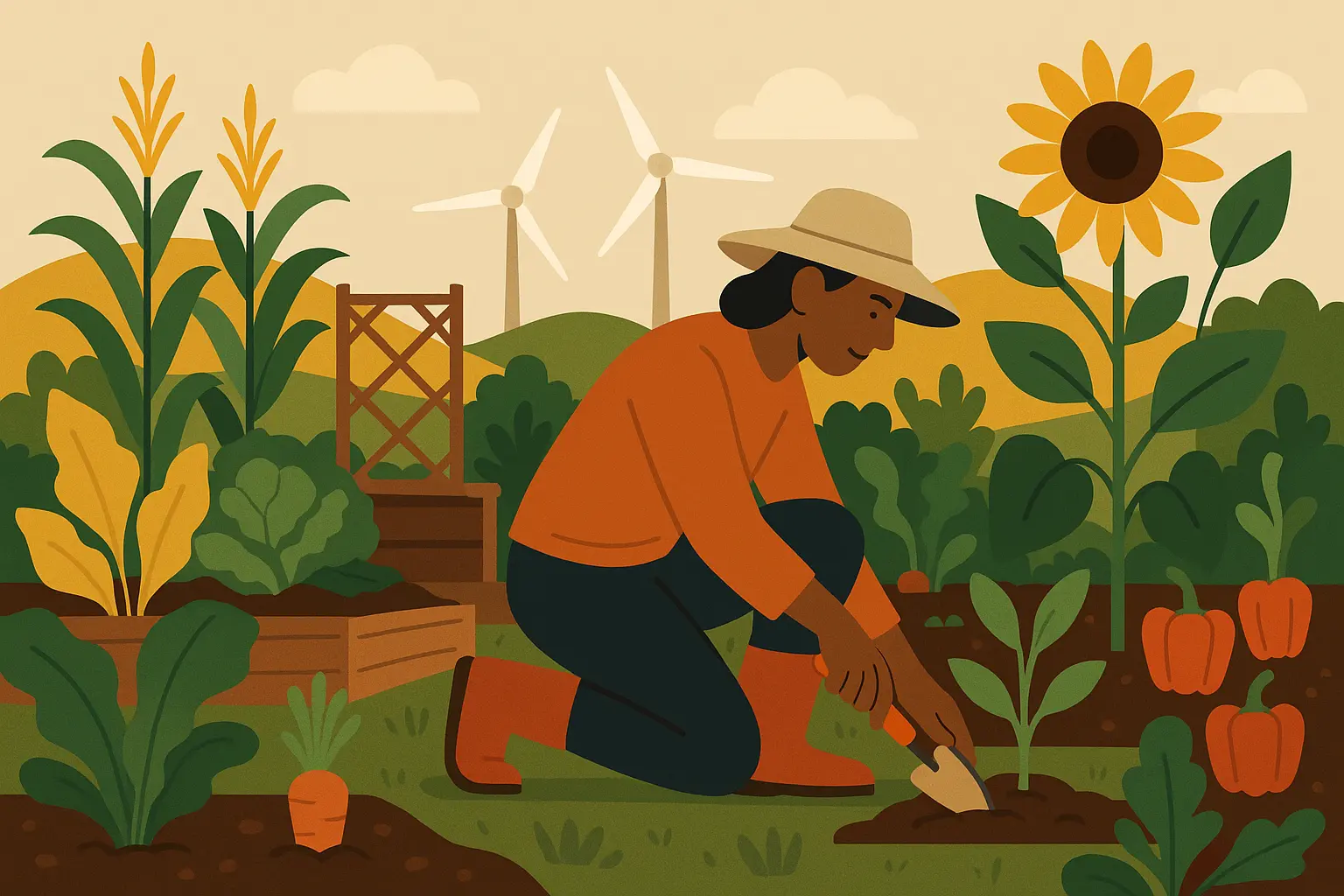
The turning point came when she connected with a local community organization that helped her develop new skills in sustainable agriculture. It wasn’t glamorous, but it was something she could build on.
Maria’s transformation from refugee to community leader is the kind of story that makes you believe in human resilience. She started a sustainable farming cooperative that now provides fresh produce to local food banks while creating jobs for other immigrants. Her advocacy work for climate refugees has actually influenced policy discussions and raised awareness about environmental displacement.
The practical parts of her story include specific strategies for building community connections when you don’t know anyone, developing new skills in unfamiliar environments, and turning personal challenges into opportunities to help others. Maria’s journey shows how individual resilience can create broader positive change while tackling one of the biggest challenges of our time.
3. The Mental Health Warrior
Behind the polished LinkedIn profile and steady career advancement, this young marketing professional was drowning in depression and anxiety. They’d perfected the art of looking successful while internally battling thoughts of worthlessness and overwhelming fear about everything.
The whole facade cracked during a panic attack in the middle of an important client presentation. That moment of complete vulnerability became the catalyst for finally getting help, though the journey toward mental wellness turned out to be way more complicated than anyone talks about.
Recovery wasn’t a straight line – it involved multiple approaches that took months to figure out. Therapy sessions that uncovered childhood trauma (which was brutal), medication adjustments that felt like playing roulette with your brain chemistry, and lifestyle changes including regular exercise and meditation that felt impossible when you could barely get out of bed.
|
Mental Health Strategy |
How Long It Actually Takes |
Signs It’s Working |
What You Need to Keep It Going |
|---|---|---|---|
|
Cognitive Behavioral Therapy |
3-6 months to see real changes |
Negative thought spirals happen less often |
Monthly check-ins to stay on track |
|
Medication Management |
2-4 months of trial and error |
Mood stabilizes, you can actually sleep |
Regular psychiatrist visits (don’t skip these) |
|
Exercise Routine |
2-3 weeks to stop hating it |
More energy, mood lifts naturally |
4-5 sessions per week (non-negotiable) |
|
Mindfulness Practice |
1-2 months before you stop rolling your eyes |
Stress doesn’t knock you flat immediately |
Daily 10-20 minutes (start with 5) |
|
Support Network |
This never really ends |
You have people to call when things get dark |
Weekly meaningful conversations |
What transforms this from just another mental health story into something powerful is how they channeled their experience into advocacy. They started speaking openly about mental health in professional settings, helping to reduce stigma and encouraging others to get help. Their story gives you specific therapeutic approaches and practical strategies for managing mental health while keeping your career intact.
4. The Financial Recovery Story
David Chen’s wake-up call came in the form of an eviction notice slipped under his door. At 30, he’d managed to rack up $150,000 in debt through a perfect storm of bad decisions, lifestyle inflation, and a gambling addiction that had completely spiraled out of control.
The transformation required the kind of radical changes that make your friends think you’ve lost your mind. David moved in with roommates (at 30, which was humbling), sold his car and took the bus everywhere, and picked up multiple income streams including freelance work and a part-time retail job that paid barely above minimum wage. More importantly, he had to address the psychological mess behind his money problems through therapy and support groups for gambling addiction
His debt elimination strategy wasn’t sexy, but it worked: the debt avalanche method for high-interest accounts, aggressive budgeting that literally allocated every single dollar, and side hustles that generated additional income. David documented every expense (and I mean everything – even the $2 coffee) and created accountability systems that prevented him from backsliding.
The four-year journey from financial disaster to debt freedom provides a detailed roadmap for anyone facing similar challenges. David’s current work as a financial literacy educator helps others understand both the practical and psychological aspects of money management, making his story particularly valuable for people struggling with debt or financial anxiety.
5. The Health Transformation Journey
When conventional medicine basically shrugged and said “learn to live with it” about a rare autoimmune condition, this person decided to take matters into their own hands. Their journey combined traditional treatments with lifestyle modifications, dietary changes, and stress management techniques that actually worked.
The transformation involved becoming their own health detective – extensive research, working with integrative medicine practitioners who didn’t dismiss their concerns, and making significant lifestyle adjustments that felt overwhelming at first. They documented everything carefully, tracking symptoms, energy levels, and overall well-being through various interventions.

What makes this story compelling is the systematic approach to health improvement and the eventual recovery that allowed them to help others facing similar challenges. They now work as a health coach, helping people navigate complex medical decisions and develop personalized wellness strategies that don’t require a medical degree to understand.
The practical applications include specific dietary protocols, stress management techniques that don’t require hours of meditation, and approaches for working effectively with healthcare providers while advocating for comprehensive treatment options. Their story offers hope and practical approaches to health management while showing you can have agency in your own health decisions.
6. The Corporate Dropout Entrepreneur
Sarah Kim’s corner office and six-figure salary as a corporate lawyer couldn’t fill the growing sense that her work was completely meaningless. The final straw came during a 14-hour day spent reviewing contracts for a company whose practices she fundamentally disagreed with. She literally sat there thinking, “I’m helping rich people get richer while my soul dies a little more each day.”
The transition from corporate security to entrepreneurial uncertainty was rough as hell. Sarah’s sustainable fashion startup failed spectacularly at first due to poor market research and pricing that made no sense. Family members questioned her sanity for leaving a prestigious career, and financial stress mounted as her savings disappeared faster than she’d anticipated.
The breakthrough came when Sarah stopped trying to compete with fast fashion and shifted focus to creating a premium sustainable brand. She spent months actually talking to customers, researching ethical suppliers, developing relationships with organic cotton farmers, and learning about sustainable manufacturing processes that didn’t destroy the environment.
Sarah’s market research process was intense – conducting 50+ customer interviews, analyzing competitor pricing strategies until her eyes bled, and testing product concepts through small batch releases. She discovered that customers were willing to pay premium prices for ethically-made clothing when they understood the true cost of fast fashion production.
Her brand’s success comes from genuine commitment to environmental responsibility combined with smart business practices that actually make money. Sarah’s story provides practical insights into market research, sustainable sourcing, and building a brand around values while staying profitable.
The journey from corporate dropout to successful entrepreneur offers specific strategies for career transitions, including financial planning for income gaps, market validation techniques, and approaches for building businesses aligned with personal values without going broke in the process.
7. The Late-Career Pivot
At 50, this manufacturing worker faced an uncomfortable reality: their industry was dying, and their skills were becoming about as useful as a flip phone. Rather than accepting early retirement or settling for some soul-crushing minimum-wage job, they decided to completely retrain in renewable energy technology.
The learning curve was brutal. Night classes in electrical systems after 10-hour factory shifts, weekend workshops on solar installation that made their back scream, and online courses in energy efficiency that made them feel ancient. The physical demands of installation work challenged someone who’d been doing the same factory routine for decades, but the intellectual stimulation of learning new technology was like waking up after years of sleepwalking.
The transformation from manufacturing worker to solar installation expert took two years of intensive study and hands-on training that often felt impossible. They started as an apprentice with a local solar company, gradually building expertise and industry connections while earning about half their previous salary.
The entrepreneurial phase began when they identified a gap in the market for residential energy consultations. Their consultancy now helps homeowners navigate solar installation decisions while providing ongoing maintenance services that actually keep systems running efficiently.
This story proves that career reinvention is possible at any age, providing specific strategies for adult learning, industry transitions, and building expertise in emerging fields. Their success challenges every assumption about age limitations in career development while offering practical guidance for others considering major professional changes.
8. The Gig Economy Success
Marcus Washington’s corporate layoff during the pandemic initially felt like getting punched in the gut. With a mortgage and family responsibilities, the prospect of extended unemployment created the kind of anxiety that keeps you up at 3 AM staring at the ceiling.
But here’s where it gets interesting – the forced career break became an opportunity to build something more sustainable. Rather than immediately scrambling for another corporate position, Marcus strategically developed multiple income streams that didn’t depend on one boss’s mood or company’s financial health.
He started with freelance writing, using his corporate communication skills to create content for small businesses that couldn’t afford big agencies. Online tutoring in his area of expertise provided steady supplemental income that helped cover the basics.
The e-commerce component began as a side project but grew into serious money. Marcus identified products with consistent demand and developed relationships with reliable suppliers, creating passive income streams that didn’t require him to trade hours for dollars constantly.
Within two years, his combined freelance income exceeded his previous corporate salary. More importantly, the diversified approach provided security that single-employer dependence never could. Economic uncertainty in one area could be offset by stability in others.
Marcus’s blueprint for gig economy success includes specific strategies for client acquisition, pricing services competitively without undervaluing yourself, and managing multiple income streams without burning out. His story provides practical guidance for anyone considering freelance work or seeking to reduce dependence on traditional employment.
9. The Social Impact Career
This Wall Street trader’s six-figure salary couldn’t compensate for the growing disconnect between their daily work and personal values. Years of facilitating transactions that made wealthy clients wealthier while contributing absolutely nothing to society created increasing dissatisfaction that money couldn’t fix.
The transition to nonprofit work required careful financial planning that felt like learning a foreign language. They spent a year aggressively reducing expenses, building savings, and researching organizations aligned with their interests in economic development and social justice.

Starting as a program coordinator at a microfinance organization provided hands-on experience with community development work. The learning curve was significant – understanding the complexities of poverty, developing cultural sensitivity, and learning to measure impact rather than just profit margins.
The entrepreneurial phase emerged from identifying gaps in existing services. Their organization now provides microfinance specifically tailored to immigrant communities, combining financial services with business education and mentorship that actually helps people succeed.
This career transformation demonstrates how high-earning professionals can transition to meaningful work while maintaining financial stability. The story provides specific strategies for values-based career changes, including financial preparation, skill translation, and building credibility in new fields.
10. The Blended Family Builder
Jennifer Martinez’s second marriage brought together two families with completely different traditions, rules, and expectations. Her three children and her partner’s two kids initially fought about everything from household chores to holiday celebrations, creating tension that threatened to destroy the new relationship before it really started.
The transformation required intentional strategies that felt like diplomatic negotiations. Jennifer implemented regular family meetings where everyone could voice concerns and participate in decision-making without it turning into a screaming match. She developed a system of shared responsibilities that gave each child ownership in the household’s success rather than feeling like unwelcome guests.
Creative bonding activities became essential tools for building relationships between step-siblings who initially wanted nothing to do with each other. Family game nights, cooking projects, and outdoor adventures created positive shared experiences that gradually replaced initial resentment with genuine affection.
Jennifer’s approach emphasized celebrating each child’s unique needs while maintaining connections with both biological parents. This required careful coordination and communication with ex-spouses, which was about as fun as it sounds, but ultimately created stability for all the children involved.
The practical applications include specific communication frameworks for blended families, strategies for managing different parenting styles without losing your mind, and techniques for creating new family traditions that honor everyone’s background.
11. The Long-Distance Love Story
When career opportunities separated them by 8,000 miles, this couple faced a choice that would define their relationship: end things or find ways to maintain connection across time zones and continents. They chose the harder path of long-distance commitment, which tested everything they thought they knew about relationships.
The five-year separation required creative approaches to intimacy and communication that went way beyond texting. They established daily video calls despite time differences that meant one person was always exhausted, shared virtual experiences like watching movies together online, and planned visits that maximized quality time together while dealing with jet lag and limited vacation days.
Trust became everything for their relationship’s survival. They developed transparency practices, shared access to social media accounts, and created accountability systems that maintained emotional connection despite physical distance and the constant temptation of attractive, available people in their respective cities.
The reunion and marriage demonstrate that long-distance relationships can actually create stronger foundations than traditional dating. Their story provides specific strategies for maintaining intimacy across distance, managing jealousy and insecurity without becoming controlling, and planning for eventual reunification.
12. The Caregiving Journey
Robert Thompson never expected to become a caregiver at 45, but his wife’s early-onset Alzheimer’s diagnosis changed everything overnight. Suddenly, he was managing her medical care, supporting confused teenagers, and maintaining his career to preserve health insurance and income – all while watching the person he loved slowly disappear.
The learning curve was overwhelming in ways he never anticipated. Medical appointments, medication management, and safety concerns consumed his mental energy. He developed systems for tracking symptoms, coordinating with healthcare providers, and creating safe environments at home that didn’t feel like a prison.
Community support became essential for survival. Robert connected with other caregivers through support groups, developed relationships with neighbors who could provide emergency assistance, and learned to accept help from family members without feeling like he was failing.
|
Caregiving Challenge |
Technology Solution |
Community Resource |
Personal Strategy |
|---|---|---|---|
|
Medication Management |
Automated pill dispensers, reminder apps |
Pharmacy consultation services |
Daily routine checklists that actually work |
|
Safety Monitoring |
GPS tracking devices, home security systems |
Neighborhood watch programs |
Emergency contact networks |
|
Respite Care |
Caregiver matching apps |
Adult day programs |
Family rotation schedules |
|
Medical Coordination |
Health record apps, telemedicine |
Support group referrals |
Appointment scheduling systems |
|
Emotional Support |
Mental health apps, online therapy |
Caregiver support groups |
Self-care time that’s non-negotiable |
Technology solutions helped manage the complexity without requiring a computer science degree. Apps for medication reminders, GPS tracking for safety, and communication tools for coordinating care with family members reduced daily stress and improved care quality.
Robert’s story provides practical strategies for balancing caregiving responsibilities with other life demands, including specific resources for caregiver support and techniques for maintaining personal well-being during extended care periods.
13. The Adoption Adventure
The adoption journey for this same-sex couple involved navigating legal complexities, social worker evaluations, and their own fears about parenting. When they learned about three siblings who needed placement together, they made the challenging decision to adopt all three children simultaneously – a decision that everyone told them was crazy.
The transition period tested everyone’s patience and sanity. The children, ages 6, 8, and 10, brought trauma histories that required specialized parenting approaches no book really prepares you for. The couple learned about attachment disorders, therapeutic parenting techniques, and trauma-informed care through trial and error that was often heartbreaking.
Building trust with children who had experienced multiple placement disruptions required consistency, patience, and professional support that felt like a full-time job. Family therapy, individual counseling for each child, and support groups for adoptive parents provided essential resources that made the difference between success and failure.
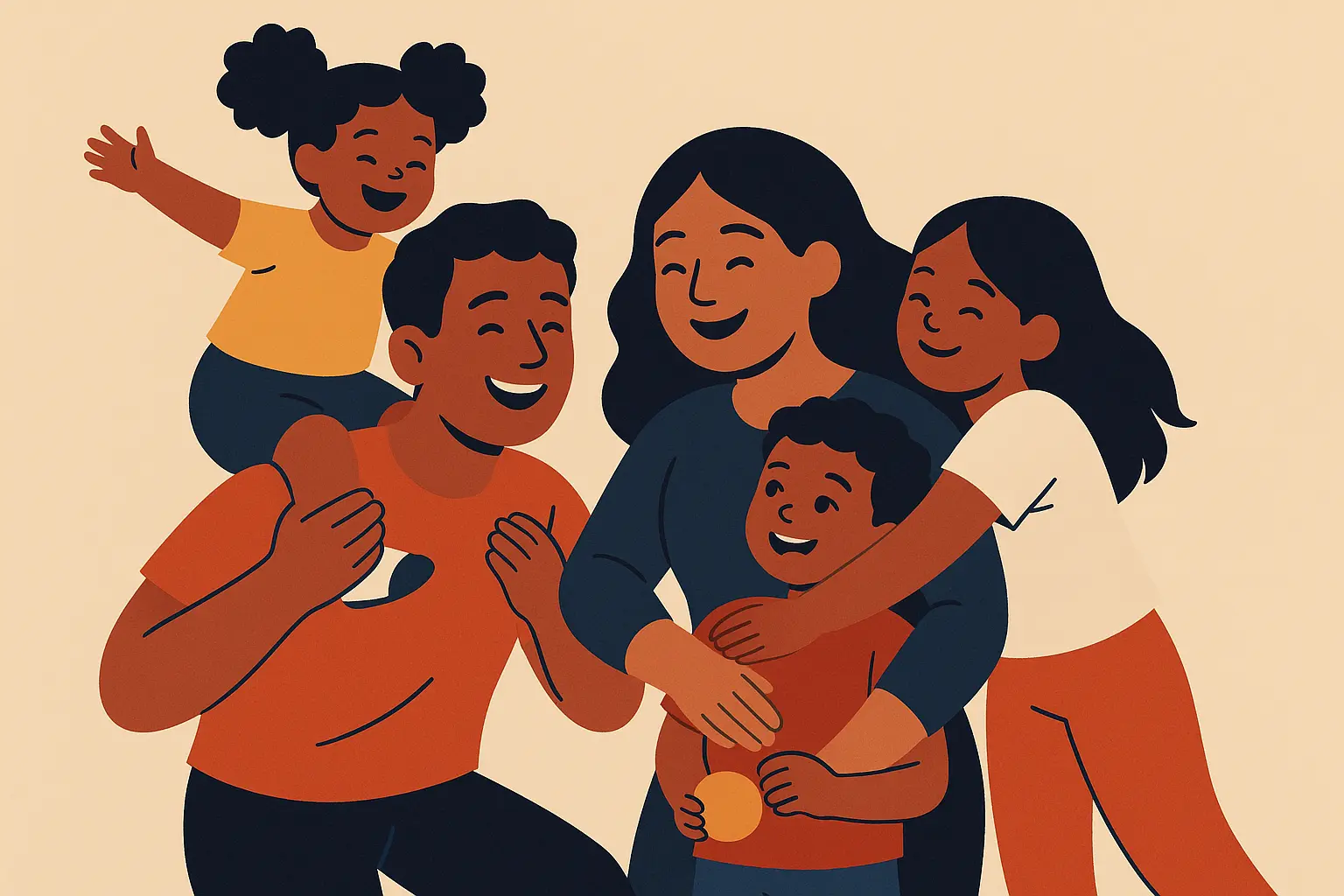
The success story demonstrates how love, commitment, and proper support can create thriving families regardless of their structure. Their experience provides practical guidance for prospective adoptive parents, including preparation strategies, resource identification, and approaches for supporting children with difficult backgrounds.
14. The Mindfulness Transformation
Lisa Patel’s panic attack during a board presentation forced her to confront stress levels that had become completely unsustainable in her marketing executive role. Insomnia, relationship conflicts, and constant anxiety had become her normal, and she was exhausted from pretending everything was fine.
The introduction to mindfulness came through a colleague’s recommendation for a meditation app, which she initially dismissed as hippie nonsense. But desperation makes you try things you normally wouldn’t, and she experienced small moments of calm during guided sessions that felt like discovering water in a desert.
The transformation involved integrating mindfulness practices throughout her day in ways that didn’t require becoming a monk. Morning meditation sessions before checking email, mindful eating practices that meant actually tasting her food, and conscious breathing during stressful meetings gradually shifted her relationship with stress and pressure.
Within a year, Lisa’s productivity actually increased as her stress levels decreased, which surprised everyone including herself. Relationships improved as she learned to listen more effectively and respond rather than react to challenging situations like a triggered teenager.
Her current work teaching mindfulness to other professionals demonstrates how personal transformation can create broader impact. Lisa’s story provides specific meditation techniques, workplace mindfulness strategies, and approaches for integrating contemplative practices into busy professional lives without feeling like a fraud.
15. The Spiritual Awakening
A research scientist’s worldview centered on empirical evidence and rational analysis until a near-death experience during emergency surgery challenged everything they believed about consciousness and reality. The experience was so far outside their scientific framework that they initially wondered if they were losing their mind.
The experience involved encounters that couldn’t be explained through conventional scientific understanding, which was deeply unsettling for someone whose career was built on measurable, provable facts. Upon recovery, they struggled to integrate these experiences with their scientific training and lifelong atheistic worldview.
The transformation involved exploring spiritual traditions while maintaining intellectual honesty, studying consciousness research, and gradually developing a worldview that incorporated both scientific rigor and spiritual openness without abandoning critical thinking.
This shift affected every aspect of
This shift affected every aspect of their life – career priorities, relationships, and daily practices. They began incorporating meditation, studying various wisdom traditions, and finding ways to bridge scientific and spiritual perspectives in their work and personal life.
Their story demonstrates how profound experiences can catalyze complete worldview shifts, providing insights for others questioning materialistic assumptions about reality and consciousness while maintaining intellectual integrity.
16. The Self-Discovery Journey
Alex Rivera spent their twenties following a script written by other people – the right college major their parents approved of, the expected career path, the appropriate relationship that looked good on social media. By 30, they felt completely disconnected from their authentic self and decided to embark on a solo journey of discovery that terrified and excited them in equal measure.
The year-long travel experience involved volunteering in different countries, living with local families who challenged their assumptions, and engaging in deep self-reflection away from familiar social pressures and expectations.
Through exposure to different cultures and values, Alex began identifying their own authentic preferences, passions, and priorities for the first time in their adult life. Journaling, meditation, and conversations with people from diverse backgrounds facilitated this self-discovery process that was often uncomfortable but ultimately liberating.
Alex’s self-discovery process included specific practices that anyone can adapt: daily journaling with prompts about values and desires, weekly solo activities to explore interests without social influence, and monthly check-ins with a life coach via video call to process insights and plan next steps.
Returning home required courage to implement changes aligned with their discoveries, which meant disappointing some people. This involved ending relationships that weren’t authentic, changing careers to match their values, and establishing boundaries with family members who resisted their transformation.
Alex’s story provides a roadmap for self-discovery that doesn’t require quitting your job and traveling the world, including specific practices for self-reflection, strategies for authentic living, and approaches for making major life changes aligned with personal values.
17. The Forgiveness Story
Years of therapy hadn’t resolved the anger and resentment toward an abusive parent that was poisoning every relationship in their life. The breakthrough came through a combination of trauma therapy, spiritual practices, and gradual understanding of generational patterns that had been passed down like toxic heirlooms.
The forgiveness process wasn’t about excusing harmful behavior or pretending everything was okay – it was about releasing the emotional burden that was limiting their own growth and happiness. This involved understanding the crucial difference between forgiveness and reconciliation, which many people confuse.
Healing required processing childhood trauma through various approaches, developing healthy boundaries that actually worked, and learning to separate their parent’s actions from their own self-worth. Different therapeutic approaches including EMDR, family systems therapy, and mindfulness practices contributed to the transformation over several years.
The outcome involved improved relationships, reduced anxiety that had plagued them for decades, and the ability to break generational patterns with their own children. Their story provides practical approaches to trauma healing and forgiveness while addressing the complex emotions involved in family dysfunction.
18. The Artistic Renaissance
Michael Chen’s accounting career provided financial security but left his creative spirit completely starved. At 40, a chance encounter with a local art class rekindled his childhood passion for painting that he’d abandoned for “practical” career choices.
The artistic development required patience and persistence that challenged his achievement-oriented mindset. Weekend classes, online tutorials, and daily practice sessions gradually improved his technical skills while he maintained his full-time accounting job and tried not to feel ridiculous.
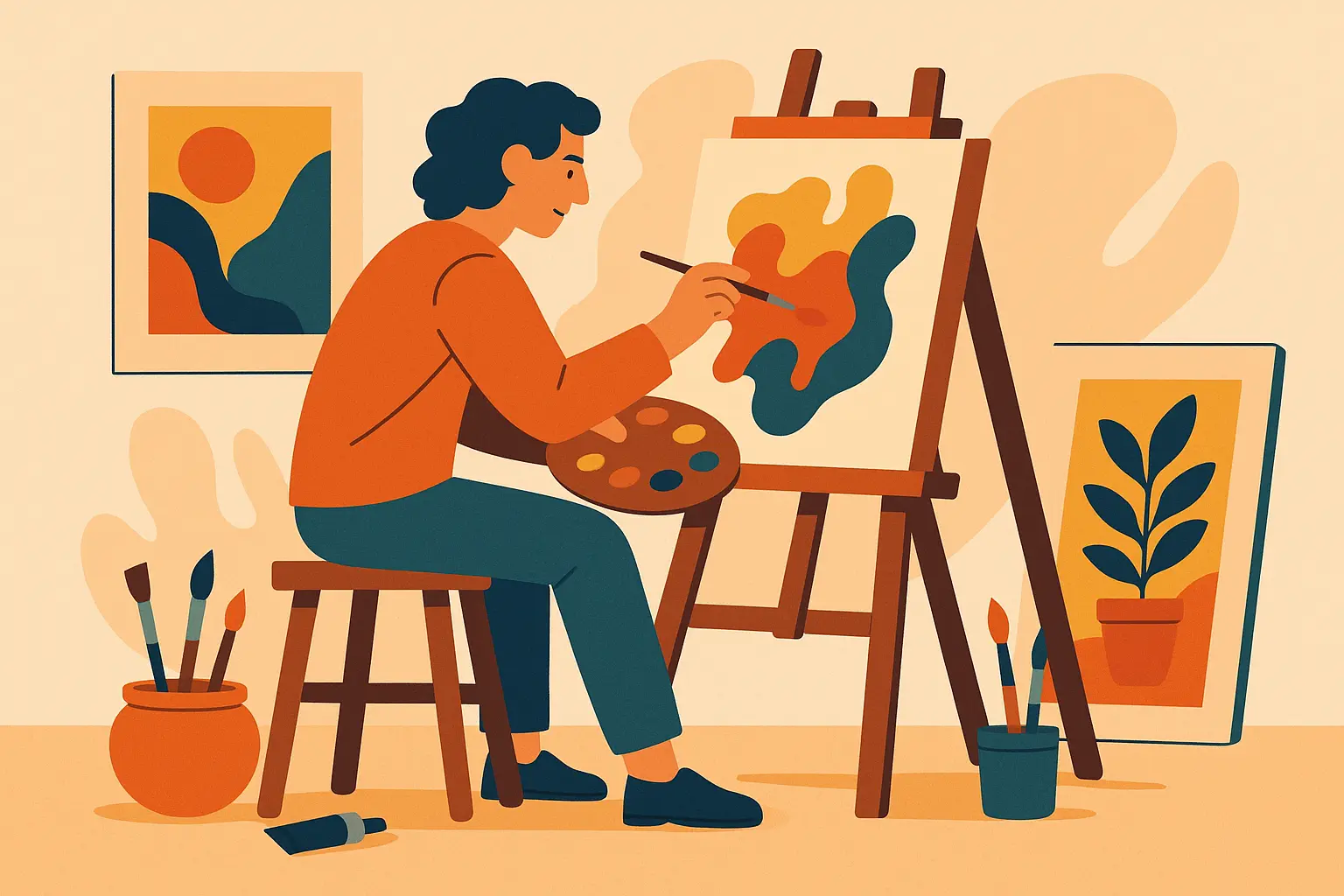
Building an audience involved learning skills they don’t teach in art class – leveraging social media platforms, participating in local art shows, and developing relationships with gallery owners who could make or break an emerging artist’s career.
The transition to full-time artistry required careful financial planning and gradual income replacement that took several years. He built a client base for commissioned work while developing passive income streams through print sales and online courses that taught other people to rediscover their creativity.
Michael’s story demonstrates that creative passions can be reignited and monetized at any age, providing specific strategies for artistic development, audience building, and creative entrepreneurship that doesn’t require starving.
19. The Tech Innovation Story
Frustrated by existing solutions for managing chronic illness symptoms that were either too complicated or completely useless, this self-taught programmer decided to create their own tracking app. What started as a personal tool to manage their own health evolved into a platform serving millions of users worldwide.
The development process involved learning programming languages from scratch while dealing with their medical condition, understanding user experience design, and navigating app store requirements that seemed designed by people who’d never used apps.
Scaling the app required understanding business development, user acquisition strategies, and maintaining ethical practices around health data privacy in an industry known for exploiting user information. The programmer chose to prioritize user welfare over maximum profit, which was both financially challenging and morally rewarding.
The success story demonstrates how personal problems can inspire technological solutions that benefit broader communities. Their approach provides insights into ethical tech entrepreneurship, user-centered design, and scaling digital products responsibly without selling your soul.
20. The Social Innovation Pioneer
Dr. Amara Okafor’s engineering career in developed countries couldn’t erase memories of her childhood community’s struggle with contaminated water that killed neighbors and made children sick. She decided to apply her technical expertise to developing affordable water purification solutions for rural areas that actually worked in real-world conditions.
The innovation process involved understanding local conditions, resource constraints, and cultural factors that affected technology adoption. Her solution needed to be maintainable by community members without advanced technical training or expensive replacement parts.
Implementation required building partnerships with local organizations, training community members, and developing sustainable business models that created local employment while maintaining affordability for people living on dollars per day.
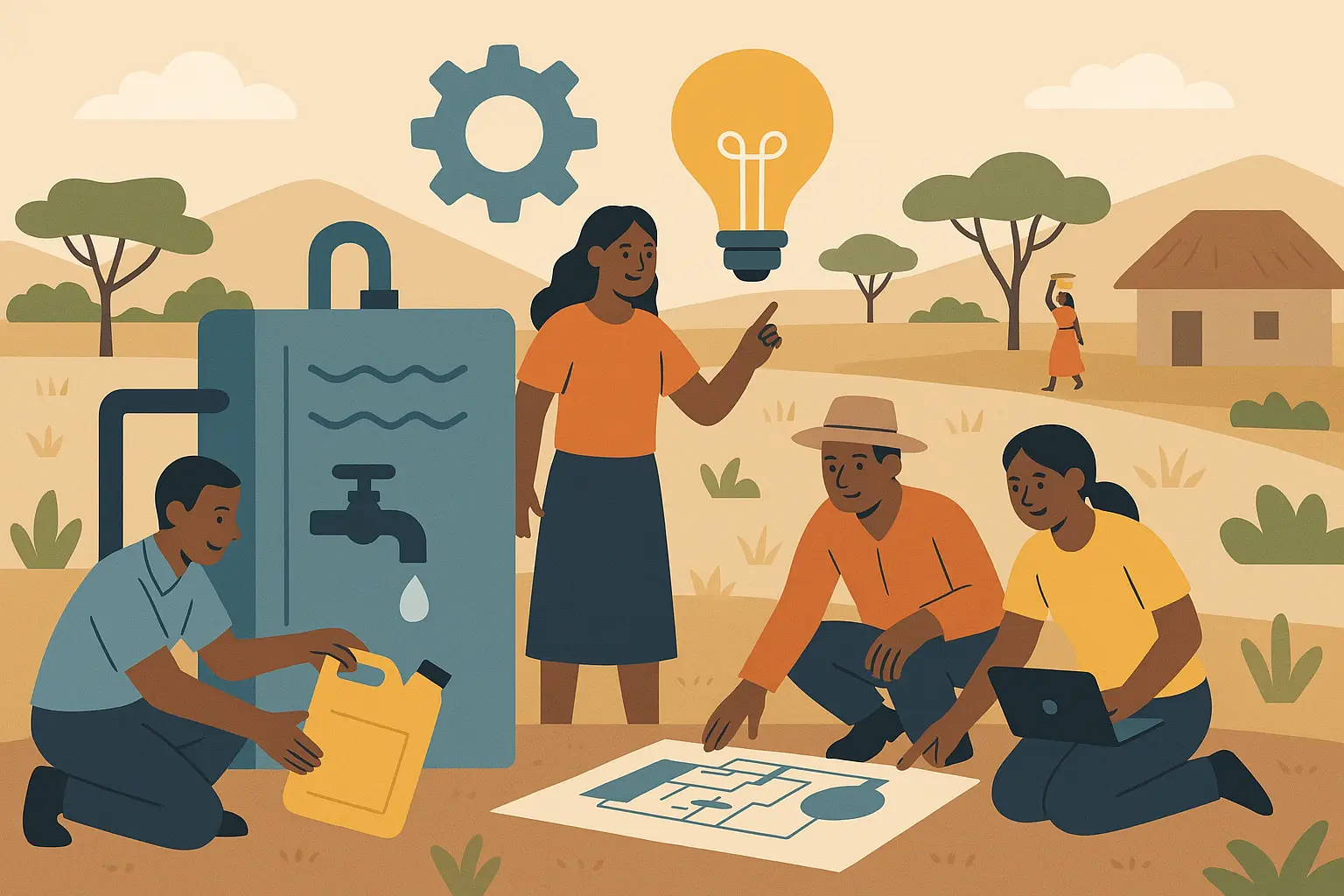
The impact extends beyond clean water access to include job creation, improved health outcomes, and community empowerment that breaks cycles of dependency. Dr. Okafor’s approach demonstrates how technical innovation can address global challenges while respecting local contexts and building local capacity.
Her story provides insights into social entrepreneurship, appropriate technology development, and creating sustainable solutions for global development challenges that don’t just make outsiders feel good about themselves.
21. The Creative Collaboration
When two documentary filmmakers connected through an online forum, they discovered shared passion for environmental justice despite living on different continents and having completely different backgrounds. Their collaboration resulted in a film that influenced policy discussions and raised awareness about climate change impacts on indigenous communities.
The creative process involved coordinating across brutal time zones, sharing resources remotely when they could barely afford their own equipment, and developing trust without meeting in person for over a year. They used digital tools for collaboration while maintaining creative vision alignment that could have easily fallen apart.
The documentary’s impact extended beyond film festivals to influence actual policy discussions and inspire grassroots activism in communities that had been ignored by mainstream media. Their story demonstrates how creative collaboration can amplify individual talents to create meaningful social change that matters.
The practical applications include strategies for remote creative collaboration, approaches for maintaining artistic vision across distance and cultural differences, and techniques for creating content that drives real social impact rather than just winning awards.
22. The Community Organizer
Rosa Gutierrez watched her neighborhood deteriorate as businesses closed, crime increased, and residents became increasingly isolated and afraid to leave their homes. Rather than moving away like everyone with options was doing, she decided to organize community improvement efforts that started small but grew into something powerful.
The transformation began with initiatives that seemed almost pathetically small – organizing neighborhood cleanups, starting a community garden in a vacant lot, and establishing informal neighborhood watch groups. These activities created opportunities for residents to connect and collaborate instead of just complaining about problems.
Building momentum required persistence and strategic thinking that Rosa had to learn on the job. She figured out how to navigate local government processes, apply for grants without losing her mind, and coordinate with various community organizations to maximize impact without stepping on toes.
The results include reduced crime rates, improved local services, increased property values, and stronger community connections that made the neighborhood feel like home again. Rosa’s approach demonstrates how individual initiative can catalyze collective action for community improvement.
Her story provides practical strategies for community organizing, including resident engagement techniques that actually work, resource mobilization approaches, and methods for sustaining long-term community development efforts without burning out.
23. The Environmental Activist
The discovery of contaminated water in their children’s school prompted a suburban parent to investigate local environmental conditions. What they found – industrial pollution affecting multiple communities – sparked a transformation from concerned parent to environmental activist who wouldn’t shut up until something changed.
The activism journey involved learning about environmental science from scratch, understanding regulatory processes that seemed designed to confuse people, and building coalitions with other affected communities who had been fighting these battles alone.
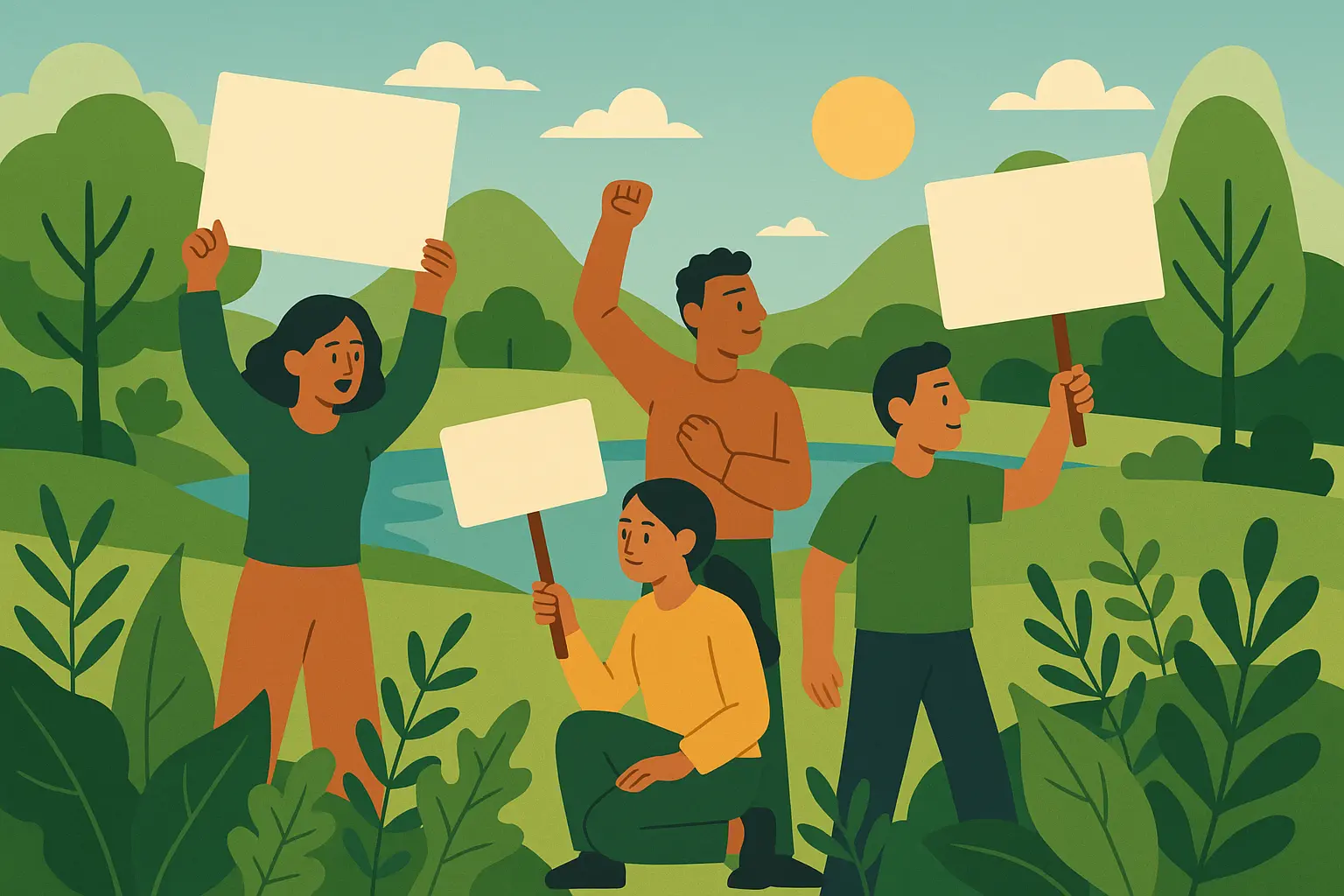
The campaign’s success required strategic thinking about political pressure, media attention, and community mobilization that combined grassroots organizing with insider knowledge of how systems actually work. Their efforts resulted in cleanup requirements for polluting companies and stronger environmental protections.
The broader impact includes policy changes that protect other communities and increased environmental awareness among local residents who had been in denial about the problems. Their story provides strategies for environmental advocacy, including research techniques, coalition building, and approaches for creating policy change that sticks.
24. The Educational Reformer
James Mitchell’s frustration with inadequate resources in his underfunded school led him to develop innovative teaching approaches that used technology and community partnerships to enhance student learning without waiting for the system to fix itself.
The innovation process involved experimenting with different teaching methods that often failed spectacularly, incorporating technology creatively when the school couldn’t afford proper equipment, and building relationships with community organizations that could provide additional resources and expertise.
Student outcomes improved dramatically in ways that surprised everyone – engagement increased, test scores rose, and graduation rates improved. Other educators began requesting training in his methods, leading to broader adoption across multiple schools that wanted to replicate his success.
The scaling process involved developing training programs, creating resource materials that other teachers could actually use, and building networks of educators committed to innovative approaches despite systemic resistance to change.
James now works nationally to train teachers and influence education policy at levels that can create systemic change. His story demonstrates how individual innovation in education can create broader transformation, providing practical teaching strategies, approaches for resource development, and methods for scaling educational innovations.
25. The Social Justice Advocate
After serving eight years in prison, this individual faced the typical challenges of reintegration that make recidivism almost inevitable – employment discrimination, housing difficulties, and social stigma that follows you everywhere. Instead of accepting these barriers as permanent, they decided to work for systemic change that would help others avoid the same struggles.
The advocacy work began with sharing their story publicly, despite the vulnerability and judgment this required. Speaking at community events, meeting with policymakers who had never talked to formerly incarcerated people, and working with other individuals in similar situations created opportunities for broader impact.
Their organization now provides reintegration support services that address real barriers, advocates for policy changes that make sense, and works to change public perceptions about formerly incarcerated individuals. The work includes job training programs, housing assistance, and mentorship services that actually help people succeed.
The systemic impact includes policy changes that reduce barriers to employment and housing, increased funding for reintegration programs that work, and shifted public attitudes about criminal justice reform and second chances.
Their story provides insights into advocacy strategies that create real change, approaches for policy transformation, and methods for supporting successful reintegration while addressing the broader social justice implications of mass incarceration.
Why These Stories Hit Different Right Now
We’re living through some seriously unprecedented challenges – technological disruption that’s changing everything, climate change that’s getting scarier by the day, economic uncertainty that makes planning feel impossible, and social division that’s tearing communities apart. These life stories matter because they show real people navigating similar challenges and finding ways to not just survive, but actually thrive and help others do the same.
Each narrative proves that transformation is possible regardless of your starting circumstances. Whether you’re dealing with financial crisis, career dissatisfaction, relationship drama, or health issues, these stories provide both inspiration and practical strategies for creating positive change that actually works.
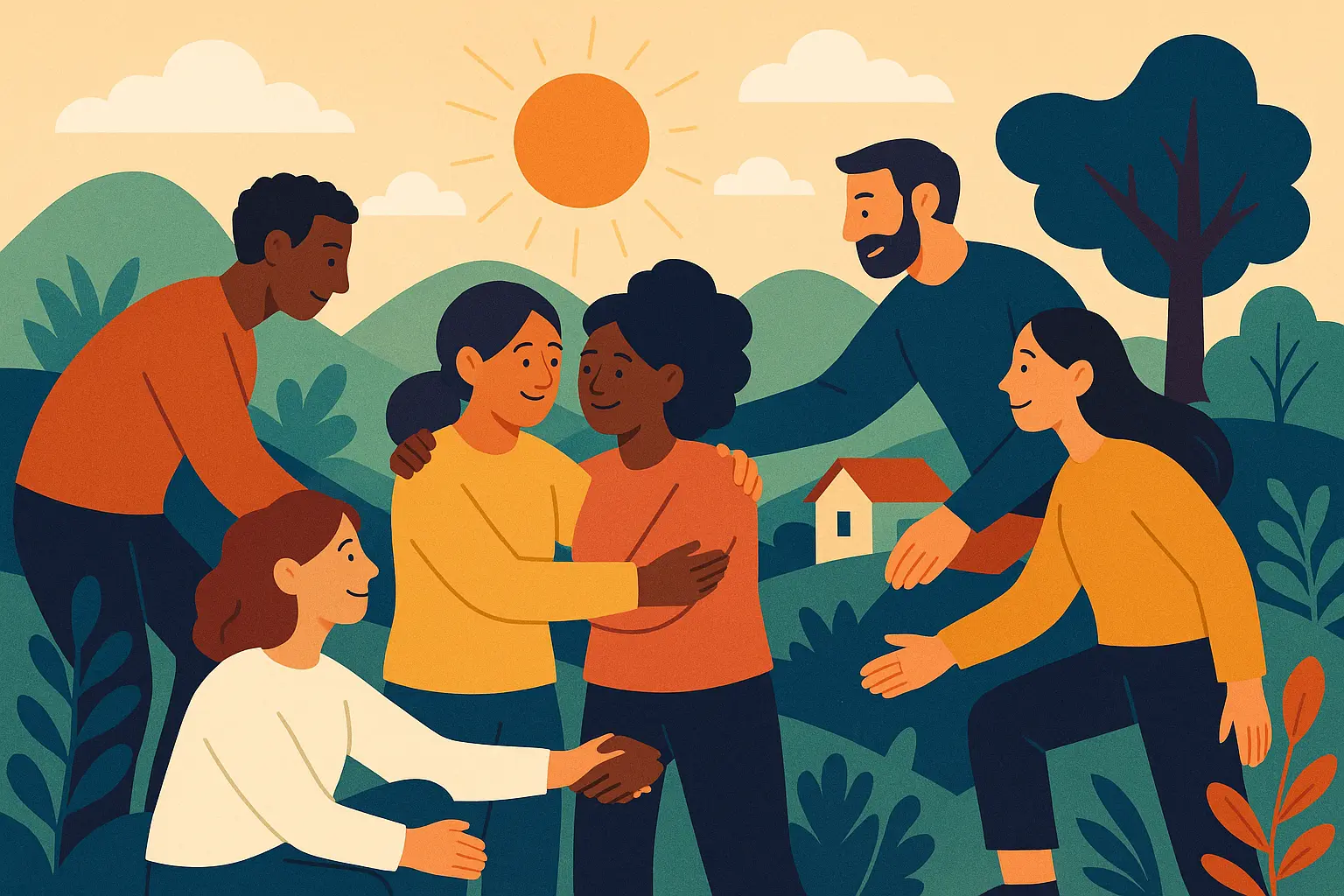
The diversity of experiences represented ensures that you can find stories that resonate with your specific circumstances while learning from experiences completely outside your own background. A tech worker struggling with digital overwhelm can learn from the digital detox pioneer, while someone facing family challenges might find guidance in the blended family builder’s approach.
What makes these stories particularly powerful is their emphasis on authentic transformation rather than quick fixes that don’t actually work. They acknowledge the messy, difficult aspects of change while demonstrating that persistence and the right strategies can lead to meaningful outcomes that last. Exploring story theme examples reveals how universal themes like resilience, transformation, and hope resonate across different narratives and create lasting impact on readers.
How Nairrate Can Help You Tell Your Own Story
Your own transformation story deserves to be told with the same power and authenticity as these 25 narratives. Whether you’re documenting your journey through career change, personal growth, or overcoming challenges that nearly broke you, the process of crafting your story can be both therapeutic for you and inspiring for others who need to hear it.
Nairrate’s Story Starters Generator provides compelling opening lines that can help you find the perfect beginning for your transformation narrative. Sometimes the hardest part of sharing your story is knowing where to start – our AI generates engaging first lines that capture attention and set the tone for powerful personal narratives that people will actually want to read.
When you’re struggling with writer’s block or looking for fresh perspectives on your experiences, Nairrate’s Story Prompt Generator offers creative challenges that can unlock new angles on your personal journey. These prompts help you explore different aspects of your transformation and discover narrative possibilities you might not have considered.
The AI’s understanding of narrative structure and character development makes it particularly valuable for crafting authentic, emotionally resonant life stories that don’t sound like they were written by a robot. It can help you find compelling ways to present your experiences while maintaining the honesty and vulnerability that make personal stories truly impactful.
Whether you’re creating a life story book for family members or developing content for a broader audience, understanding first-person story examples can provide valuable insights into crafting personal narratives that connect with readers on an emotional level.
Ready to start crafting your own transformation story? Try Nairrate’s story generation tools and discover how AI can help you share your journey in ways that inspire and guide others facing similar challenges.
Final Thoughts
These 25 life stories represent more than individual transformations – they’re proof that change is possible regardless of circumstances, age, or background. Each narrative demonstrates that ordinary people can overcome extraordinary challenges while creating positive impact that extends far beyond their personal circumstances.
What makes these stories particularly valuable isn’t just their inspirational quality, but their practical applications that you can actually use. They provide specific strategies, mindsets, and approaches that you can adapt to your own situations. Whether you’re facing career uncertainty, relationship challenges, health issues, or simply seeking more authentic living, these narratives offer both hope and actionable guidance that works in the real world.
The diversity of experiences represented ensures that everyone can find stories that resonate with their circumstances while learning from experiences outside their own background. More importantly, these stories demonstrate that personal transformation often creates opportunities to help others facing similar challenges, turning individual growth into broader social impact.
Here’s the thing – your own story of transformation, challenge, and growth has the potential to inspire and guide others. The experiences you’ve navigated, the lessons you’ve learned, and the strategies you’ve developed could be exactly what someone else needs to hear right now. Consider documenting your journey – for your own reflection and as a gift to others who might benefit from your insights and experiences.
Your story matters. Someone out there is going through exactly what you went through, feeling like they’re the only one, wondering if they’ll ever figure it out. Your messy, imperfect, real-life story could be exactly what they need to keep going.



Add comment